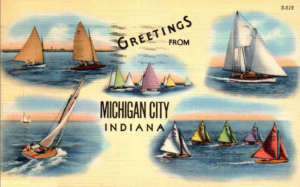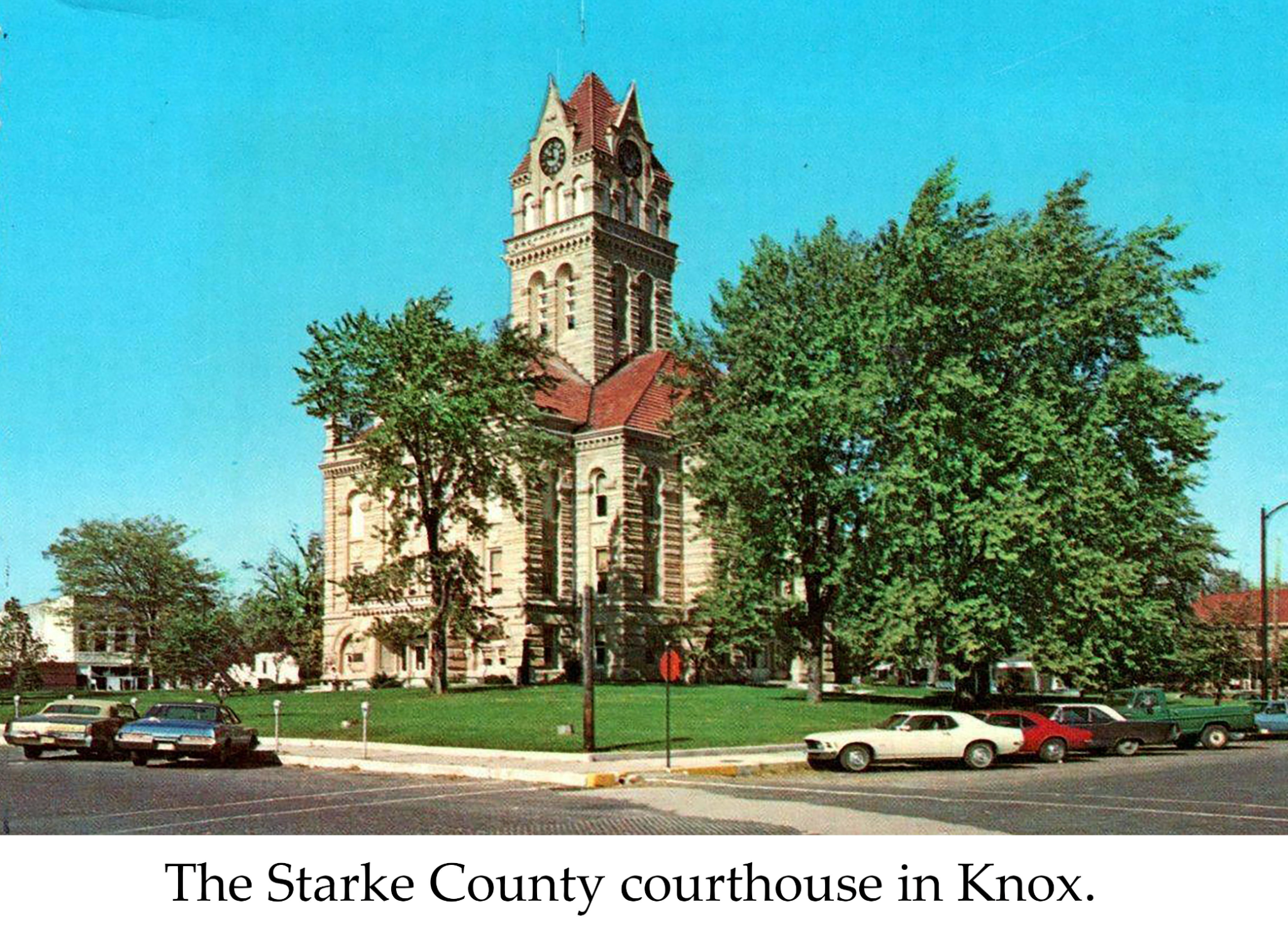Test Your Name Knowledge of the Origins of Lakes-Area Place Names
Writer / Jeff Kenney
Photography Provided
Lakes-area readers, like people everywhere, pass by familiar towns, cities and county demarcations with likely little thought as to the origins of their names. See how many of these historical name-related questions you can answer without looking at the explanations that follow.
- Many towns, bodies of water and locations in the area derive their names from Native American words, but this county seat takes its name from one of several Potawatomi leaders who all shared the same name, including one who helped negotiate the end of the Fox Wars in the 1730s.
Answer: The name Winamac, county seat of Pulaski County, belonged to several warriors and leaders of centuries past. Winamac is a Potawatomi version of the name Wilamet (the Eastern Algonquian version of the name). At least one man bearing that name was an ally of New France in the early 1700s, though others named Winamac were prominent during the war of 1812, one an ally and one who fought against the U.S. in that conflict.
- Which area town was aptly named for the president of a major railroad company?
Answer: North Judson in Starke County was originally platted in 1859 as Brantwood, but its post office, a year later, was named North Judson for William D. Judson, president of the Cincinnati & Chicago Railroad, one of several rail lines laid through the town. Since Judson, Indiana, already existed, the “North” portion of its name was probably added to avoid confusion.
- Which area city derives its name from the French language for “the door?”
Answer: LaPorte, both the county and city name, means “the door” in French, named since French explorers and fur traders (starting in the 1670s) utilized a wide Native American trail passing through the forest to the prairie, which served as a sort of doorway.
LaPorte, the city, was settled in 1832. Ten years later, the first medical school in the Midwest, La Porte Medical School, was founded, with one of its graduates, William Worrall Mayo, going on to establish what would become the famous Mayo Clinic in 1889 in Minnesota.
- What area county seat owes its name to the New England-derived settlers who helped found it?
Answer: Early settlers to what is today Marshall County in the 1830s included descendants of the New England “Yankee” English Puritans of the east coast of the U.S. The county seat of Plymouth, not surprisingly, was named after Plymouth, Massachusetts, legendary as the landing site of the Mayflower ship in 1620. Plymouth, Indiana, was incorporated as a town in 1851.
- What area county was named for a famous inventor?
Answer: Fulton County, which dates to 1836, was named after Robert Fulton, well-known as the inventor of the steamboat. The area has several interesting name origins. The county seat of Rochester, laid out in 1835, was named for Rochester, New York, the hometown of Alexander Chamberlain. Adjacent Lake Manitou, actually the result of damming two smaller local lakes, is a Potawatomi name meaning “Devil’s Lake,” due to persisting Native Americans legends that a monster lived in it.
- This area county seat was named for a general in the Revolutionary War.
Answer: The fact that the Knox post office, in Starke County, dates to 1820 may help explain why the town was named in tribute to American Revolutionary War General Henry Knox, who died in 1806, not many years before the post office was established. The actual city of Knox was founded in 1851. Henry Knox had been prominent in the Continental Army and later the U.S. Army, working closely with George Washington. He was the first secretary of war in the U.S. as well.
- This small but notable area town takes its name from a St. Louis stove manufacturer.
Answer: Henry Harrison Culver launched the Culver Brothers stove company, later the Wrought Iron Range Company, in 1864. After his retirement, Culver eventually launched the military academy bearing his name (today, with the addition of Culver Girls Academy, its official name is Culver Academies), in 1894. The adjacent town of Marmont voted to change its name to Culver in honor of the man and the school, shortly thereafter.
- This prominent city in the wider lakes area was named for a geographic feature of a body of water.
Answer: South Bend’s name comes from its being literally at the south bend of the St. Joseph River, originally used by the fur traders who established trading posts in the area. By 1829 the post office of the growing town bore the name Southold, Allen County, Indiana, though the proliferation of other communities named Southold at the time likely led to its name being changed to the current one. In 1831 the city was laid out as the county seat of St. Joseph County.
- Which local town owes its name to the influence of its heavily German population?
Answer: The town of Bremen, incorporated in 1871, was first named New Bremen by the predominantly German settlers who called it home in its earlier years. Eventually the “New” portion of the name was dropped.
- Which community in the wider lakes area bears the name of a Shawnee scout of the War of 1812?
Answer: Logansport, settled around 1826, pays tribute to Shawnee warrior James Logan, a scout for U.S. forces in the area during the War of 1812. Located at the confluence of the Wabash and Eel rivers, the “port” portion of its name fit the town as well.
- Which local county was named for a Supreme Court justice?
Answer: Marshall County was formed one year after the 1835 death of John Marshall, the fourth chief justice of the United States from 1801 to his death, and former secretary of state. Speaking of things judicial, the first courthouse in the county was built in Plymouth in 1840 and the present courthouse, currently being restored and renovated, first opened in 1872.
- A heavy Polish influence is visible in names of which area county and the city serving as its county seat?
Answer: Kosciusko County was named after American Revolutionary War General Tadeusz Kościuszko, a military leader from the Polish-Lithuanian Commonwealth with an impressive record in his homeland and the U.S. He died in 1817, just 19 years before the Indiana county that bears his name was organized. Its county seat is named for Warsaw, the capital of Poland, where Kościuszko graduated from the Corps of Cadets.
If you were tempted to answer this question with Pulaski County, you would have been partly correct. Pulaski County, dating to 1818, was named for Count Casimir Pulaski, a Polish soldier known for saving George Washington’s life during the Revolutionary War. The county seat of Pulaski, of course, is Winamac, whose name is not Polish in origin and is referenced in another question in this quiz.
- What area town takes its name from an area of Kentucky?
Answer: The Marshall County town of Bourbon was platted in 1853, with many of its early settlers hailing from Bourbon Township in Kentucky.
- What small area town is alleged to have inspired the name of a famous fictional figure?
Answer: Though earlier known as the town of Rye, Toto is best known as having been the bargain capital of the region for decades in the 20th century, even drawing deal-hunters from as far away as Chicago to its unusual conglomeration of discount stores. Though that aspect of the town has changed, the rumor has persisted that “The Wonderful Wizard of Oz” author L. Frank Baum was inspired to name his Dorothy character’s dog after seeing the name of the town on a calendar or other item (Baum’s family once had a residence on nearby Bass Lake). The claim has been debated through the years and remains officially unproven.

- This port city in the area takes its name from a body of water and a roadway.
Answer: Michigan City was founded after Major Isaac C. Elston of Crawfordsville bought the land in 1830 and mapped out the city without even having visited the site yet. He named it for being the terminus of the Michigan Road, the former Indian trail and earliest road to northern Indiana from Indianapolis (and, in fact, all the way from the Ohio River). Of course, the city sits on the shores of Lake Michigan and was a bustling post town by the mid-19th century.
- This area city, once called “the City of Churches,” takes its name from a South American city.
Answer: Established in 1836, Valparaiso (which means “Vale of Paradise” in old Spanish) takes its name from a city in Chile. Originally named Portersville, Valparaiso, Indiana, served as the county seat of Porter County, which drew its name from U.S. Naval Commander David Porter. Porter served in several wars, fighting near that Chilean city in the Battle of Valparaiso during the War of 1812. Porter County, Indiana, was organized in the 1830s.
- This area county takes its name, like so many others, from a military hero, though the two names are actually spelled differently.
Answer: A number of area counties and towns bear the names of military or political figures who died not many years before the founding of the so-named entity. Starke County is no different, except its spelling differs from that of its namesake: General John Stark, who commanded New Hampshire troops at the Battle of Bunker Hill in 1775 in the Revolutionary War and defeated the British at the Battle of Bennington in 1777. Stark died in 1822, just 13 years before Starke County was founded in 1835 (it was organized in 1850). Early maps of the county indeed demonstrate its name was spelled “Stark,” and while no solid evidence clarifies why the “e” was added at the suffix of the name, the most plausible source is a clerical error from the state government in Indianapolis.









